Tungsten Skarns in British Columbia
Last Updated: 1st Jun 2018By Richard Gunter
Please note that articles on mindat.org are contributed by members and are not peer reviewed. This unverified article may contain incorrect or unverified data and does not officially represent the views of mindat.org or any of its management team.Tungsten Skarns in British Columbia
Richard Gunter
5493 Cedarcreek Drive
Chilliwack, British Columbia
V2R 5K4
pamrichg@shaw.ca
Abstract:
Tungsten skarns are an uncommon, high-temperature member of an extensive family of contact-metamorphic deposits within the British Columbia Cordillera. Currently there are no operating tungsten mines in British Columbia but historic production, as times of high W demand and prices, has taken place.
The euhedral scheelite crystals are always pseudoctahedral though the vast majority of occurrences are as colourless embedded grains noted by their fluorescence. The euhedral scheelite is colourless to light yellow-orange in colour and does not appear substantially different from the surrounding silicate minerals. Scheelite is heavy with a SG of 6.1 and it is moderately hard with a Moh’s harness of 4.5-5. Scheelite fluoresces a bright white in SW UV.
The coarse-grained nature of the tungsten skarns allows the detection of scheelite mineralization with the use of Short Wave Ultraviolet light. Wolframite Group minerals do not occur in the tungsten skarns so almost all of the contained tungsten within the skarn will be in the form of scheelite. Diopside, Grossular, Vesuvianite, Wollastonite, Quartz and Calcite are constant phases in the tungsten skarns. Sulphide and Sulphosalt mineralization can occur in some skarns but not all of them.
Table of Contents:
Abstract:
Introduction:
Geology :
Mineralogy:
Sulphides-sulphosalts
Oxides:
Scheelite
Silicates:
Diopside
Grossular
Vesuvianite
Wollastonite
Skarn Types:
Conclusions:
References:
Figures and Images:
Figures:
Figure 1: Detailed Map of Dimac Mine
Figure 2: Map of various Skarn Types, British Columbia
Figure 3: Variations in Chemistry of Grossular and Pyroxene
Figure 4: Coarse-grained Garnet-Quartz-Scheelite Skarn
Figure 5: Banded Retrograde Skarn Dimac Mine
Images:
Image 1: Scheelite-Quartz, Bralone Mine, British Columbia
Image 2: Scheelite, Nova Scotia
Image 3: Scheelite Nodule, British Columbia
Image 4: Wolframite, Cornwall, U.K.
Image 5: Ferberite, Colorado
Image 6: Scheelite, Dimac Mine, British Columbia
Image 7: Scheelite, Van Silver Mine, British Columbia
Image 8: Diopside, Chelsea, Quebec
Image 9: Diopside, Fluorite, Calcite, Yates Mine, Quebec
Image 10: Grossular, KST Prospect, British Columbia
Image 11: Grossular and Clinopyroxene, French Mine, British Columbia
Image 12: Vesuvianite, Dimac Mine, British Columbia
Image 13: Wollastonite, New York
Image 14: French Mine Skarn, British Columbia
Image 15: Malayaite and Grossular, Ash Mountain, British Columbia
Image 16: Andradite, Marmoraton Mine, Ontario
Introduction:
Scheelite (CaWO3) is a not uncommon mineral in small amounts within skarns and gold-quartz veins of the British Columbia Cordillera. During the Second World War tungsten was a strategic metal in high demand so many programs were designed to investigate it. Stevenson (1941) completed the study for British Columbia. His main target were scheelite occurrences associated with the gold veins in the Bralorne and Cariboo Districts which had been disregarded by the gold miners.
The British Columbia Geological Survey has produced three recent papers on scheelite (and associated wollastonite) skarns in the province; White (1988), Webster, Ray and Pettipas (1991) and Ray (2013). Other scheelite occurrences have been noted more recently from gold-quartz veins in the Bralorne District (Moore, Hart and Marsh (2009) and in skarn on Foley Peak, near Chilliwack (Joyce (2009)). In the latter two cases the volume of scheelite was small enough not to have been considered economically viable.
The response of scheelite in Short Wave Ultraviolet light is characteristic bright white, even if the scheelite grains are small as they often are. Some skarn scheelite occurrences in other locations (for example the scheelite-powellite solid solution series in the Sterling Mine, New Jersey) have minor molybdenum impurities which make the fluorescence of the scheelite a light yellow colour. None of the British Columbia scheelite has this impurity so the crystals are colourless to white in plain light and bright white in Short Wave Ultraviolet.
There are 42 Mindat.org localities for scheelite in British Columbia. Of these the: Britannia Mine; the Bralorne Mine; the Dimac Mine; the Quartz Tunnel of the Van Silver Mine and the Chilliwack location have posted photos of scheelite. Of these only the Dimac Mine is a skarn deposit. The Chilliwack location is a lens in black shale and the remaining localities are gold-silver veins with minor scheelite.
North of British Columbia large deposits of commercial scheelite have been found at the Cantung Mine, Yukon and its surrounding ore deposits. In British Columbia only the Dimac Mine and the Emerald and Red Rose tungsten mines have had intermittent production and all of the other localities are small.
Geology:
Skarns are common in the Canadian Cordillera where carbonate rocks are in contact with Jurassic to Cretaceous Age plutons formed during mountain building. The British Columbia government has published a series of deposit models with tungsten skarns as one of the models. Detailed mapping of the tungsten skarns was required around each of the potentially economic deposits because of rapid changes in tungsten grade that the skarn orebodies produce. An example of the type of mapping required is that of Falconer (1986) on the Silence Lake Tungsten Skarn (Dimac Mine).
Figure 1: Detailed map of the Dimac Mine W Skarn deposit; Falconer (1986)
The Upper Band siliceous garnet skarn (UB) contained the highest grade tungsten and was far coarser than the Lower Band (LB). It was the source of scheelite crystals associated with colourless quartz, coarse-grained brown vesuvianite, red grossularite and green diopside. The attitude of the bands, approximately parallel to the contact of the metasediments and the Raft Batholith quartz monzonite is typical of this type of skarn. The interlayering of the scheelite-bearing skarn UB) and the non-scheelite bearing wollastonite skarn (PL) is also typical of this deposit type.
The metasediments containing the tungsten deposits (Dimac Mine, B.C.; # 40) are calcareous but need not be a specific chemistry as similar skarns at other locations in British Columbia and the Yukon contain deposits of: tin (Ash Mountain B.C.; # 42); gold (Nickel Plate Mine, B.C; #26); copper (Phoenix B.C.; #12); lead-zinc (Blue Bell Mine, B.C.;# 48 and Sa Dena Hess, Yukon; #44), iron (Merry Widow Mine, B.C.; # 3) and commercial garnet (Mount Reardon, B.C.; # 49). These deposits, along with others, are shown in the map by Ray (2013)
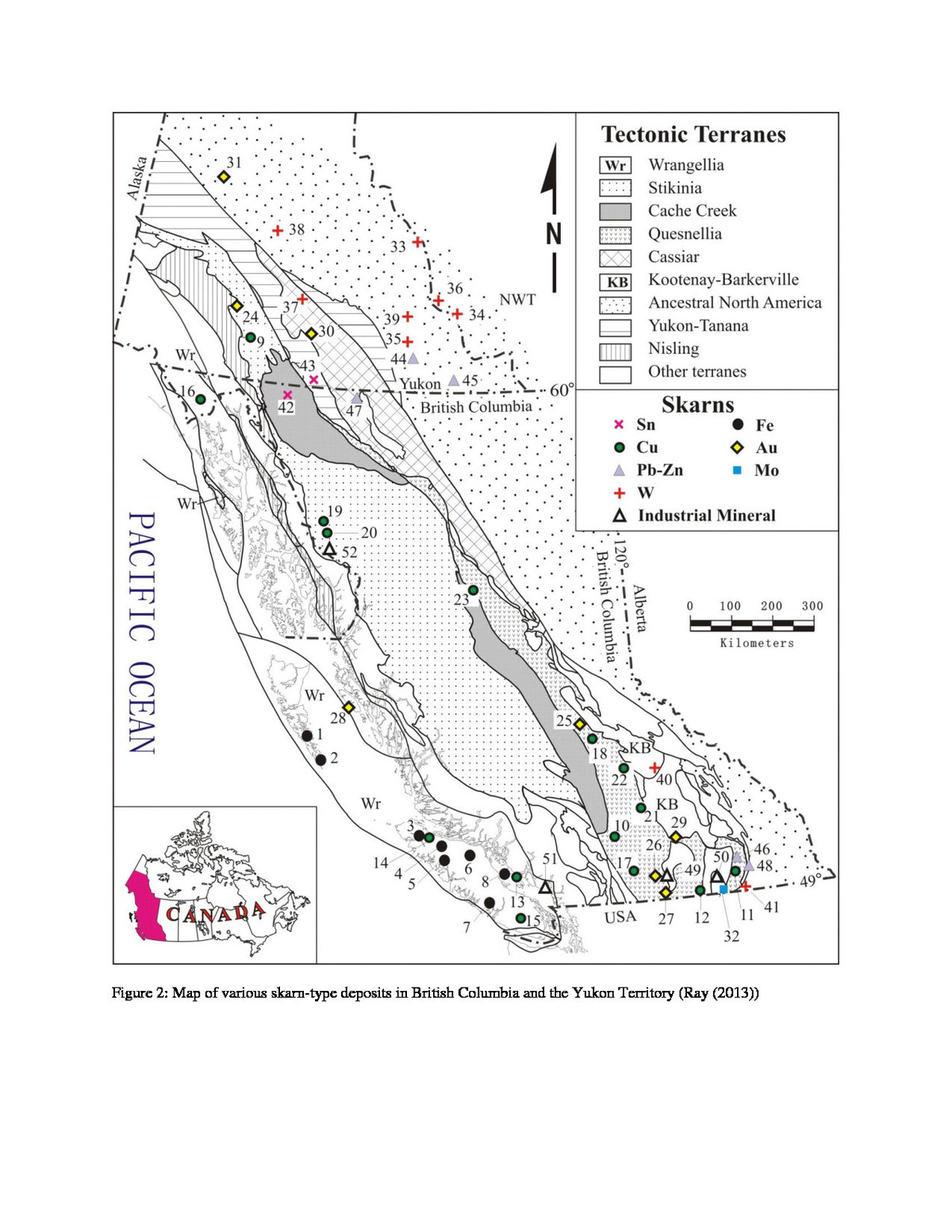 Figure 2: Map of various skarn-type deposits in British Columbia and the Yukon Territory (Ray (2013))
Figure 2: Map of various skarn-type deposits in British Columbia and the Yukon Territory (Ray (2013))
The only portions of British Columbia and the Yukon that do not contain skarn deposit are the Coast Mountain Batholith in the center of the map and the non-metamorphosed carbonate platform overthusts to the east of the map in British Columbia. Some areas of the northern coastal belt and the western Yukon Territory are less explored and thus underrepresented on the map.
The map also illustrates that not only are various chemical variations of the metasediments not an indicator of the type of skarn produced by contact metamorphism but geographic location is also not a factor. The various types of skarn are often in geographic proximity to one another and the tungsten skarn deposits, for example, are isolated from each other and surrounded by other types of skarn deposits.
The conclusion of Ray (2103) that the W skarns are high temperature bodies that lack many of the veining and pipe-like features of low pressure skarns is borne out by the excavations in the commercial deposits of scheelite such as the Dimac Mine. The scheelite mineralization of these skarns is often found within late-stage to retrograde portions of the skarn units. The higher initial temperature of the skarns may have been necessary to mobilize the W that was later deposited as the temperature cooled.
The cooler temperature deposition of scheelite would also account for its presence in mesothermal gold-silver veins such as Bralorne, British Columbia, gold district. Image 1: Scheelite and Quartz, Bralorne, British Columbia.
Here the gold-silver veins occur as the high temperature representative of a zoned Au-Ag/Sb/Hg regional plumbing system (Moore, Hart and Marsh (2008)).
Scheelite can occur in several different parageneses as a minor phase; often associated with commercial quantities of gold. Image 2: Scheelite from a gold-tungsten vein system, Nova Scotia.
Scheelite can also occur in lower temperature metamorphosed black schists Image 3: Scheelite nodule from black schist, Chilliwack, British Columbia.
These lower temperature scheelite occurrences are not skarns and do not contain any of the other phases that would indicate high-grade metamorphism.
Scheelite is the only tungsten mineral within the skarns. Minerals of the wolframite series occur in quartz veins Image 4: Wolframite in Quartz Cornwall
and in some granitic vein systems, such as the Nederland District of Colorado Image 5: Ferberite in Altered Granite, Nederland, Colorado
but not in skarns. The quartz-wolframite vein systems are not significantly different in other respects to the quartz-scheelite vein systems, and in some cases the quartz veins contain both wolframite and scheelite, there is a geochemical reason for the overall mineralogical division. Locally the veins contain pseudomorphs of wolframite after octahedral crystals of scheelite and the rarer scheelite after wolframite.
Mineralogy:
Sulphides and Sulphosalts:
Ray (2013) has divided the W skarns in British Columbia into two families. One family, the simple W skarns, has no significant metal content beyond W so the only metal-bearing phases are scheelite and pyrrhotite. The other family is the complex W skarns. These include the Red Rose and the Emerald Tungsten deposits. These complex W skarns are often associated with base metal deposits and have a wide range of sulphides and sulphosalts associated with them.
There is a gradation between a W skarn with small sulphide content and a sulphide-bearing skarn with minor scheelite. The large Cantung W Deposit in the Yukon Territory has a significant portion of its scheelite ore embedded in massive pyrrhotite.
Oxides:
Scheelite (CaWO4):
Scheelite is the sole ore mineral in the commercial tungsten skarns. Members of the Heubnerite-Ferberite series occur in quartz veins but are not present in the W skarns. Scheelite normally occurs as colourless to white, equant crystals Image 6: Scheelite-Grossular-Vesuvianite-Diopside, Dimac Mine, British Columbia.
In most W skarns the scheelite crystals occur as 1 to 2 mm isolated anhedral grains that would be hard to distinguish were it not for the strong, bright-white response in Short Wave Ultraviolet light. The scheelite-molybdenite series is notes because there was a smelter penalty for scheelite concentrate with more than 5% Mo3. Hsu and Galli (1973) give details of the scheelite-powellite series and how to distinguish the molybdenum content of scheelite.
Most specimen-grade scheelite does not originate in skarns but in quartz veins and greisens where more impurities are present and the scheelite is not white in colour. The greisens and quartz veins also provide open cavities for the mineral crystals to grow, whereas the skarn ore-bodies always contain crystals of scheelite and silicates embedded in quartz or calcite. Image 7: Scheelite crystal from the Gold-Quartz vein at the Quartz Tunnel, Van Silver Mine, British Columbia.
This photo illustrates the typical shape and surface features of a scheelite crystal grown in an open cavity. The surface of the crystal is more regular than the embedded scheelite crystal from the Dimac Mine.
Silicates:
Diopside (CaMgSi2O6):
Light to medium green prismatic crystals of diopside are characteristic of many high temperature skarn-like deposits.
A good example of diopside from a skarn can be seen in an example from Quebec Image 8: Diopside, Autoroute 5 Roadcut, Chelsea, Quebec.
A more typical, darker diopside with a good clinopyroxenes cross-section is from the Yates Mine, Quebec Image 9: Diopside with Fluorite (purple) and Calcite (orange), Yates Mine, Quebec.
A detailed description of the Yates Mine (Lafontaine (1980) illustrates these Grenville Age skarn-like occurrences. Some of the Fluorapatite in these siliciocarbonatites contain small melt inclusions of pyrrhotite+chalcopyrite=
magnetite+galena (Sinaei-Esfahani (2013) but no inclusions of scheelite have been noted at either the Autoroute 5 Roadcut or the Yates Mine.
Grossular (Ca3Al2(SiO4)3):
Light reddish grossular is a ubiquitous mineral in almost all of the skarn occurrences in British Columbia. A non-tungsten bearing skarn east of La Barriere, British Columbia provides a good example Image 10: Grossular, KST Prospect, British Columbia.
The chemistry of grossular in various skarn deposits can vary with the type of skarn deposits Ray (2013) illustrates that the type of skarn has a direct bearing on both the grossular and clinopyroxene compositions.
 Figure 3: Variations in Grossular and Pyroxene Compositions in British Columbia Skarns: Ray (2013)
Figure 3: Variations in Grossular and Pyroxene Compositions in British Columbia Skarns: Ray (2013)
For example the grossular associated with the gold skarn deposit at Hedley, British Columbia Image 11: Grossular and Clinopyroxene from a Gold Skarn, French Mine, Hedley, British Columbia.
The grossular is a light cinnamon colour rather than red.
Ray’s (2013) conclusion is that the intrusions that create W skarns have much more crustal contamination than the intrusions that create the other skarn types. This is illustrated by the more typically crustal calc-silicate compositions of both the grossular and clinopyroxene in the W skarns. The other types of skarn deposits have a much more restricted grossular composition.
Vesuvianite (Ca19(Al,Mg,Fe)13Si18O68(O,OH,F)10):
Vesuvianite is a complex silicate that has three different sub-structures (dependent on the temperature of formation) and several closely related species such as manganvesuvianite and aluminovesuvianite. The Vesuvianite within skarn deposits is the high-temperature variety. In W skarn deposits, such as the Dimac Mine and the Emerald Tungsten Mine, the vesuvianite occurs with grossular-quartz-calcite in areas of high-grade scheelite. It occurs as olive-green prismatic crystals associated with reddish grossular and white scheelite at the Dimac Mine Image 12: Vesuvianite (olive-green) prisms, Dimac Mine, British Columbia.
Wollastonite (CaSiO3):
Wollastonite occurs as white, elongate fibres in the non-mineralized skarn at the Dimac Mine. Wollastonite can occurs as coarse-fibrous masses and fans in some skarns Image 13: Wollastonite, Andradite New York State
This is a photograph of wollastonite-andradite in a skarn. The wollastonite is of sufficient purity that it is mined as a source of refractory raw materials. In most skarns the wollastonite is not as pure as the photographed sample but the colour and radiating texture of the colourless crystals will be similar.
Skarn Types:
Tungsten skarns are a particular subset of a wide-ranging series of skarn deposits both worldwide (Kwak (1987) and in the British Columbia Cordillera (Roy (2013). Tungsten is mobile under a particular set of high P conditions that impart specific chemistry to the surrounding skarn silicates. Most of the silicate skarns are adjacent to high-level intrusives of Jurassic to Cretaceous Age but some seem to be related to hot fluids ascending along faults in the crust. In those cases no igneous rocks occur in the immediate vicinity of the deposit yet high temperature silicates are produced in the carbonate rocks.
The geometry of the tungsten skarns are often tabular and in the case of the Dimac Mine, mimic the contact geometry between the granite and metasediments prior to skarn formation. The circumstances of formation of each skarn deposit are unique so there is no stratigraphic or structural control that would apply to all deposits. The high temperatures that are required to form the tungsten skarns tends to convert large areas of metasediments to skarn in the immediate vicinity of the deposits. Thus the “marble line” useful in delineating other skarn deposits, is not present in this deposit type.
Skarn deposits by their very nature are variable in mineralogy on a meter scale or smaller. The W skarns are often more coarse-grained than other skarn types so the variability in chemistry is even more pronounced. Large crystal aggregates of 10’s of centimeters (grossular and vesuvianite) occur with medium to coarse grains of scheelite in most tungsten skarns. The overall chemistry of the W skarns is fairly restricted by low Fe, S and Mg content so the variability in the skarns on a deposit scale is not high. This makes deposit sampling, especially by diamond-drill holes to determine W grade, a difficult exercise.
Figure 4: Coarse-grained Garnet-Quartz-Scheelite Skarn from Dimac Mine, marker pen for scale: Ray (2013)
The skarn creation process generally takes two forms. A prograde skarn (formed to peak P/T) and a retrograde skarn (formed by declining P/T) often by redistributing the elements within the prograde skarn. The retrograde skarns generally form as coarser-grained layers and lenses within the prograde skarn.
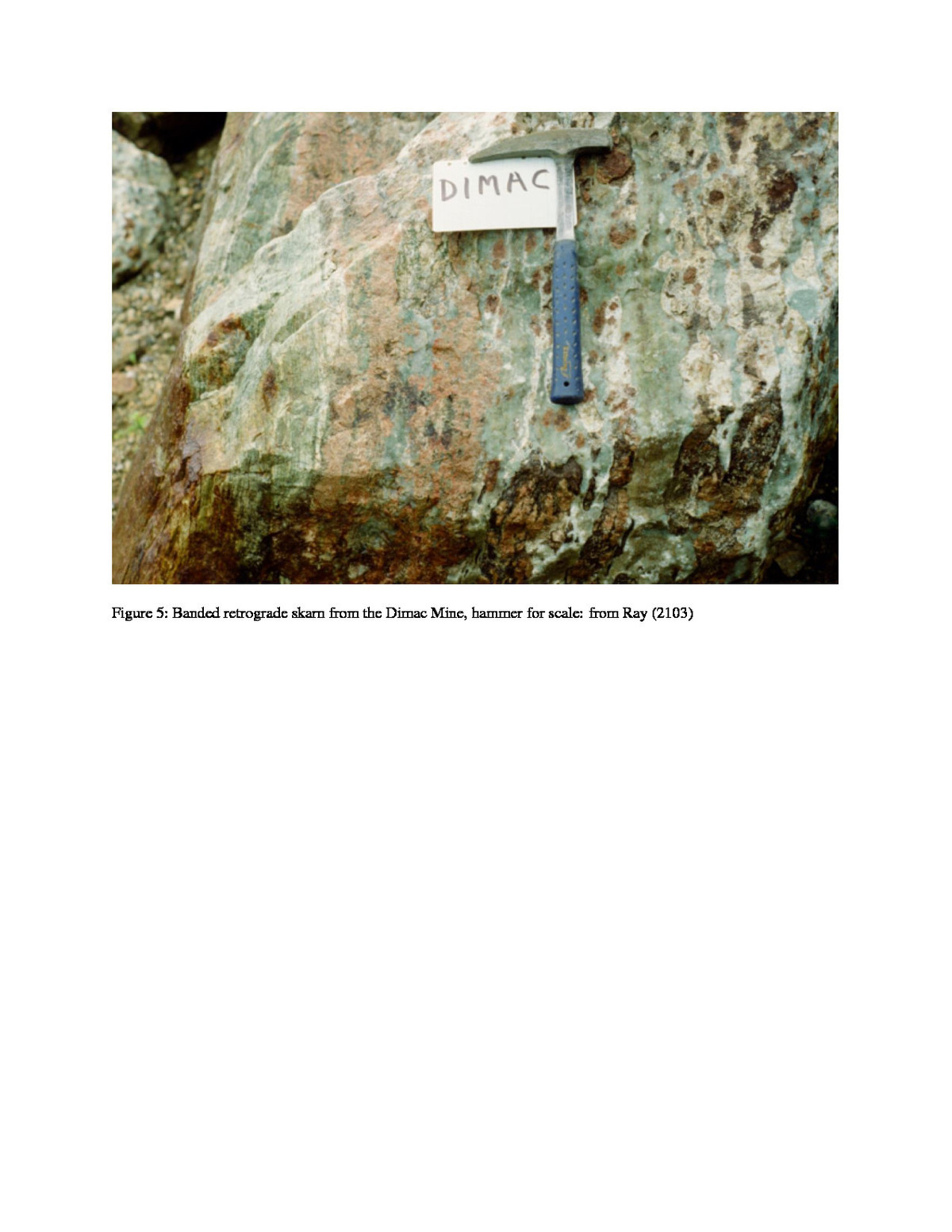 Figure 5: Banded retrograde skarn from the Dimac Mine, hammer for scale: from Ray (2103)
Figure 5: Banded retrograde skarn from the Dimac Mine, hammer for scale: from Ray (2103)
The layering of the garnet and vesuvianite in Figure 5 is a result of skarn formation and does not reflect changes in the original limestone chemistry. The pH/Eh changes in skarn chemistry can occur over relatively small volumes of rock and permeability contrast can be an important limiting factor on skarn mineralogy.
Other skarns such as the Hedley Complex (Nickel Plate, Cantly, French and Good Hope Au Mines) are large skarn systems with bedding parallel skarn development as seen in Figure 6. The section of skarn (tan and brown) and limestone (grey) is from the Nickel Plate Mine; (from (Roy (2013). The geopick is for scale.
 Figure 6: Partially Altered Skarn Section, Nickel Plate Mine, British Columbia; from Roy (2013)
Figure 6: Partially Altered Skarn Section, Nickel Plate Mine, British Columbia; from Roy (2013)
The partial skarn formation is along bedding planes and results in layering on a large scale (Figure 6) or a small hand-specimen scale Image 14: Skarn from French Mine illustrating the layering of Grossular ( light brown) and Clinopyroxene (green) over a few centimeters.
The skarn layering is often characteristic of the deposit types. Tin-bearing skarns can often have intense, fine scale layering Image 15: Malayaite and Andradite in Tin Skarn, Ash Mountain, British Columbia
while iron skarns are often massive with coarse-grained andradite layers. Image 16: Coarse-grained Andradite from the Marmoraton, Mine, Ontario, Iron Skarn.
There are also deposit types such as the Cordilleran High-Temperature Carbonate deposits (occurring largely in Mexico; Megaw (2018), but with representatives in the United States and British Columbia) that have many of the characteristics of a skarn type with metamorphic silicates and Pb-Zn-Ag +/- Sn sulphides. This deposit type is now considered to be hydrothermal in origin but the dividing line between them and most skarn deposits is not abrupt. The larger scale hydrothermal alteration of the carbonate host rock during the creation of the base metal deposits differentiates them from the localized contact metamorphism/metasomatism of the skarn deposits.
Conclusions:
Tungsten skarns in British Columbia are a small portion of a very broad ranging contact metamorphic metallogenetic region characterized by Jurassic and Cretaceous Age plutons invading carbonate rocks. The westward drift of the North American Continent over hot spots in the various oceanic plates in the western Pacific Ocean has led to the emplacement of numerous granitic to diorite plutons into cooler island arc and paleo-North American continental margin crust.
In many cases the reaction between the intrusion and the cooler crust has produced some contact metamorphic features that do not contain economic quantities of mineralization. In more unusual cases (Figure 2) the contact metamorphism carries with it oxides of Fe, W and Sn and sulphides of Fe, Pb, Cu and Zn in sufficient quantities to be considered economically viable.
All but a few of these skarns were located by the original settlers of the province as they often occur in outcrops. In the case of the W skarns there was no market for tungsten prior to the 20th Century so none of the deposits were mined in pioneer days unless there were other metals associated with the deposit. Skarn deposits were often coarser grained than other deposit types, such as the Sedex deposit at the Sullivan Mine, so the early miners were able to produce saleable Pb-Zn-Ag-Au concentrates more easily from deposits that would not currently be economically minable.
The small scale of many of the base-metal rich skarn deposits in the British Columbia cordillera means they were mined out in the early 1900’s, before modern geological investigations could establish the conditions of formation or do the kind of detailed mapping that the Dimac W Mine has available. All that is left of many of the old mines are small dumps with displaced samples. These samples can give some information on the mineralogy and mode of formation of the deposits but much information is lost.
References:
Falconer J.S. (1986) Geological Report on Silence Lake Mining Lease no. 16 for Troudor Resources: Geological Branch Assessment Report, 17 p.
Hsu L.C. and Galli P.E. (1973) Origin of the Scheelite-Powellite Series of Minerals; Economic Geology, v. 68, pp. 681-696
Joyce D.K. (2009) Recent Activities-British Columbia Collecting, 2009: davidkjoyceminerals.com/pagefiles/activities.asp
Kwak T.A.P. (1987) W-Sn Skarn Deposits and related metamorphic skarns and granitoids; Elsevier Science Publishing Company, New York, 450 p.
Lafontaine M.A.G. (1980) Uranium-Thorium Deposits at the Yates Mine, Huddelsfield Township, Quebec: M.Sc. Thesis, University of Ottawa, 93 p.
Megaw P.K.M. (2018) The Santa Eulalia Mining District, Chihuahua, Mexico; Mineralogical Record, January-February 2018, v. 49 no. 1, 184 pp.
Moore L.H., Hart C.J.R. and Marsh E.E. (2009) Sulphur sources for gold deposits in the Bridge River-Bralorne mineral district, southwestern British Columbia (part of NTS 092J), pp. 91-102
Roy G.E. (2013) A review of skarns in the Canadian Cordillera: British Columbia Geological Survey Open File 2013-08, 50 p.
Sinaei-Esfahani F. (2013) Localized metasomatism of Grenville marble leading to its melting, AutoRoute 5, near Old Chelsea, Quebec: M.Sc. McGill University, 133 p.
Stevenson J.S. (1941) Tungsten Deposits of British Columbia: British Columbia Department of Mines, Bulletin # 10, 107 p.
Webster I.C.L, Ray G.E. and Petipas A.R. (1991) An Investigation of Selected Mineralized Skarns in British Columbia: British Columbia Geological Survey, Geological Fieldwork 1991, p. 235-252
White G.V. (1988) Wollastonite Occurrences in British Columbia: British Columbia Geological Survey, Geological Fieldwork 1988, p. 489-496
Richard Gunter
5493 Cedarcreek Drive
Chilliwack, British Columbia
V2R 5K4
pamrichg@shaw.ca
Abstract:
Tungsten skarns are an uncommon, high-temperature member of an extensive family of contact-metamorphic deposits within the British Columbia Cordillera. Currently there are no operating tungsten mines in British Columbia but historic production, as times of high W demand and prices, has taken place.
The euhedral scheelite crystals are always pseudoctahedral though the vast majority of occurrences are as colourless embedded grains noted by their fluorescence. The euhedral scheelite is colourless to light yellow-orange in colour and does not appear substantially different from the surrounding silicate minerals. Scheelite is heavy with a SG of 6.1 and it is moderately hard with a Moh’s harness of 4.5-5. Scheelite fluoresces a bright white in SW UV.
The coarse-grained nature of the tungsten skarns allows the detection of scheelite mineralization with the use of Short Wave Ultraviolet light. Wolframite Group minerals do not occur in the tungsten skarns so almost all of the contained tungsten within the skarn will be in the form of scheelite. Diopside, Grossular, Vesuvianite, Wollastonite, Quartz and Calcite are constant phases in the tungsten skarns. Sulphide and Sulphosalt mineralization can occur in some skarns but not all of them.
Table of Contents:
Abstract:
Introduction:
Geology :
Mineralogy:
Sulphides-sulphosalts
Oxides:
Scheelite
Silicates:
Diopside
Grossular
Vesuvianite
Wollastonite
Skarn Types:
Conclusions:
References:
Figures and Images:
Figures:
Figure 1: Detailed Map of Dimac Mine
Figure 2: Map of various Skarn Types, British Columbia
Figure 3: Variations in Chemistry of Grossular and Pyroxene
Figure 4: Coarse-grained Garnet-Quartz-Scheelite Skarn
Figure 5: Banded Retrograde Skarn Dimac Mine
Images:
Image 1: Scheelite-Quartz, Bralone Mine, British Columbia
Image 2: Scheelite, Nova Scotia
Image 3: Scheelite Nodule, British Columbia
Image 4: Wolframite, Cornwall, U.K.
Image 5: Ferberite, Colorado
Image 6: Scheelite, Dimac Mine, British Columbia
Image 7: Scheelite, Van Silver Mine, British Columbia
Image 8: Diopside, Chelsea, Quebec
Image 9: Diopside, Fluorite, Calcite, Yates Mine, Quebec
Image 10: Grossular, KST Prospect, British Columbia
Image 11: Grossular and Clinopyroxene, French Mine, British Columbia
Image 12: Vesuvianite, Dimac Mine, British Columbia
Image 13: Wollastonite, New York
Image 14: French Mine Skarn, British Columbia
Image 15: Malayaite and Grossular, Ash Mountain, British Columbia
Image 16: Andradite, Marmoraton Mine, Ontario
Introduction:
Scheelite (CaWO3) is a not uncommon mineral in small amounts within skarns and gold-quartz veins of the British Columbia Cordillera. During the Second World War tungsten was a strategic metal in high demand so many programs were designed to investigate it. Stevenson (1941) completed the study for British Columbia. His main target were scheelite occurrences associated with the gold veins in the Bralorne and Cariboo Districts which had been disregarded by the gold miners.
The British Columbia Geological Survey has produced three recent papers on scheelite (and associated wollastonite) skarns in the province; White (1988), Webster, Ray and Pettipas (1991) and Ray (2013). Other scheelite occurrences have been noted more recently from gold-quartz veins in the Bralorne District (Moore, Hart and Marsh (2009) and in skarn on Foley Peak, near Chilliwack (Joyce (2009)). In the latter two cases the volume of scheelite was small enough not to have been considered economically viable.
The response of scheelite in Short Wave Ultraviolet light is characteristic bright white, even if the scheelite grains are small as they often are. Some skarn scheelite occurrences in other locations (for example the scheelite-powellite solid solution series in the Sterling Mine, New Jersey) have minor molybdenum impurities which make the fluorescence of the scheelite a light yellow colour. None of the British Columbia scheelite has this impurity so the crystals are colourless to white in plain light and bright white in Short Wave Ultraviolet.
There are 42 Mindat.org localities for scheelite in British Columbia. Of these the: Britannia Mine; the Bralorne Mine; the Dimac Mine; the Quartz Tunnel of the Van Silver Mine and the Chilliwack location have posted photos of scheelite. Of these only the Dimac Mine is a skarn deposit. The Chilliwack location is a lens in black shale and the remaining localities are gold-silver veins with minor scheelite.
North of British Columbia large deposits of commercial scheelite have been found at the Cantung Mine, Yukon and its surrounding ore deposits. In British Columbia only the Dimac Mine and the Emerald and Red Rose tungsten mines have had intermittent production and all of the other localities are small.
Geology:
Skarns are common in the Canadian Cordillera where carbonate rocks are in contact with Jurassic to Cretaceous Age plutons formed during mountain building. The British Columbia government has published a series of deposit models with tungsten skarns as one of the models. Detailed mapping of the tungsten skarns was required around each of the potentially economic deposits because of rapid changes in tungsten grade that the skarn orebodies produce. An example of the type of mapping required is that of Falconer (1986) on the Silence Lake Tungsten Skarn (Dimac Mine).
Figure 1: Detailed map of the Dimac Mine W Skarn deposit; Falconer (1986)
The Upper Band siliceous garnet skarn (UB) contained the highest grade tungsten and was far coarser than the Lower Band (LB). It was the source of scheelite crystals associated with colourless quartz, coarse-grained brown vesuvianite, red grossularite and green diopside. The attitude of the bands, approximately parallel to the contact of the metasediments and the Raft Batholith quartz monzonite is typical of this type of skarn. The interlayering of the scheelite-bearing skarn UB) and the non-scheelite bearing wollastonite skarn (PL) is also typical of this deposit type.
The metasediments containing the tungsten deposits (Dimac Mine, B.C.; # 40) are calcareous but need not be a specific chemistry as similar skarns at other locations in British Columbia and the Yukon contain deposits of: tin (Ash Mountain B.C.; # 42); gold (Nickel Plate Mine, B.C; #26); copper (Phoenix B.C.; #12); lead-zinc (Blue Bell Mine, B.C.;# 48 and Sa Dena Hess, Yukon; #44), iron (Merry Widow Mine, B.C.; # 3) and commercial garnet (Mount Reardon, B.C.; # 49). These deposits, along with others, are shown in the map by Ray (2013)

Skarn Types in British Columbia
Dimac Mine, Silence Lake, Revelstoke Mining Division, British Columbia, Canada
Dimac Mine, Silence Lake, Revelstoke Mining Division, British Columbia, Canada
The only portions of British Columbia and the Yukon that do not contain skarn deposit are the Coast Mountain Batholith in the center of the map and the non-metamorphosed carbonate platform overthusts to the east of the map in British Columbia. Some areas of the northern coastal belt and the western Yukon Territory are less explored and thus underrepresented on the map.
The map also illustrates that not only are various chemical variations of the metasediments not an indicator of the type of skarn produced by contact metamorphism but geographic location is also not a factor. The various types of skarn are often in geographic proximity to one another and the tungsten skarn deposits, for example, are isolated from each other and surrounded by other types of skarn deposits.
The conclusion of Ray (2103) that the W skarns are high temperature bodies that lack many of the veining and pipe-like features of low pressure skarns is borne out by the excavations in the commercial deposits of scheelite such as the Dimac Mine. The scheelite mineralization of these skarns is often found within late-stage to retrograde portions of the skarn units. The higher initial temperature of the skarns may have been necessary to mobilize the W that was later deposited as the temperature cooled.
The cooler temperature deposition of scheelite would also account for its presence in mesothermal gold-silver veins such as Bralorne, British Columbia, gold district. Image 1: Scheelite and Quartz, Bralorne, British Columbia.
Here the gold-silver veins occur as the high temperature representative of a zoned Au-Ag/Sb/Hg regional plumbing system (Moore, Hart and Marsh (2008)).
Scheelite can occur in several different parageneses as a minor phase; often associated with commercial quantities of gold. Image 2: Scheelite from a gold-tungsten vein system, Nova Scotia.
Scheelite can also occur in lower temperature metamorphosed black schists Image 3: Scheelite nodule from black schist, Chilliwack, British Columbia.
These lower temperature scheelite occurrences are not skarns and do not contain any of the other phases that would indicate high-grade metamorphism.
Scheelite is the only tungsten mineral within the skarns. Minerals of the wolframite series occur in quartz veins Image 4: Wolframite in Quartz Cornwall
and in some granitic vein systems, such as the Nederland District of Colorado Image 5: Ferberite in Altered Granite, Nederland, Colorado
but not in skarns. The quartz-wolframite vein systems are not significantly different in other respects to the quartz-scheelite vein systems, and in some cases the quartz veins contain both wolframite and scheelite, there is a geochemical reason for the overall mineralogical division. Locally the veins contain pseudomorphs of wolframite after octahedral crystals of scheelite and the rarer scheelite after wolframite.
Mineralogy:
Sulphides and Sulphosalts:
Ray (2013) has divided the W skarns in British Columbia into two families. One family, the simple W skarns, has no significant metal content beyond W so the only metal-bearing phases are scheelite and pyrrhotite. The other family is the complex W skarns. These include the Red Rose and the Emerald Tungsten deposits. These complex W skarns are often associated with base metal deposits and have a wide range of sulphides and sulphosalts associated with them.
There is a gradation between a W skarn with small sulphide content and a sulphide-bearing skarn with minor scheelite. The large Cantung W Deposit in the Yukon Territory has a significant portion of its scheelite ore embedded in massive pyrrhotite.
Oxides:
Scheelite (CaWO4):
Scheelite is the sole ore mineral in the commercial tungsten skarns. Members of the Heubnerite-Ferberite series occur in quartz veins but are not present in the W skarns. Scheelite normally occurs as colourless to white, equant crystals Image 6: Scheelite-Grossular-Vesuvianite-Diopside, Dimac Mine, British Columbia.
In most W skarns the scheelite crystals occur as 1 to 2 mm isolated anhedral grains that would be hard to distinguish were it not for the strong, bright-white response in Short Wave Ultraviolet light. The scheelite-molybdenite series is notes because there was a smelter penalty for scheelite concentrate with more than 5% Mo3. Hsu and Galli (1973) give details of the scheelite-powellite series and how to distinguish the molybdenum content of scheelite.
Most specimen-grade scheelite does not originate in skarns but in quartz veins and greisens where more impurities are present and the scheelite is not white in colour. The greisens and quartz veins also provide open cavities for the mineral crystals to grow, whereas the skarn ore-bodies always contain crystals of scheelite and silicates embedded in quartz or calcite. Image 7: Scheelite crystal from the Gold-Quartz vein at the Quartz Tunnel, Van Silver Mine, British Columbia.
This photo illustrates the typical shape and surface features of a scheelite crystal grown in an open cavity. The surface of the crystal is more regular than the embedded scheelite crystal from the Dimac Mine.
Silicates:
Diopside (CaMgSi2O6):
Light to medium green prismatic crystals of diopside are characteristic of many high temperature skarn-like deposits.
A good example of diopside from a skarn can be seen in an example from Quebec Image 8: Diopside, Autoroute 5 Roadcut, Chelsea, Quebec.
A more typical, darker diopside with a good clinopyroxenes cross-section is from the Yates Mine, Quebec Image 9: Diopside with Fluorite (purple) and Calcite (orange), Yates Mine, Quebec.
A detailed description of the Yates Mine (Lafontaine (1980) illustrates these Grenville Age skarn-like occurrences. Some of the Fluorapatite in these siliciocarbonatites contain small melt inclusions of pyrrhotite+chalcopyrite=
magnetite+galena (Sinaei-Esfahani (2013) but no inclusions of scheelite have been noted at either the Autoroute 5 Roadcut or the Yates Mine.
Grossular (Ca3Al2(SiO4)3):
Light reddish grossular is a ubiquitous mineral in almost all of the skarn occurrences in British Columbia. A non-tungsten bearing skarn east of La Barriere, British Columbia provides a good example Image 10: Grossular, KST Prospect, British Columbia.
The chemistry of grossular in various skarn deposits can vary with the type of skarn deposits Ray (2013) illustrates that the type of skarn has a direct bearing on both the grossular and clinopyroxene compositions.

Variations in Grossular and Clinopyroxene Chemistry with Skarn Type, British Columbia
Nickel Plate Mine, Hedley, Osoyoos Mining Division, British Columbia, Canada
Nickel Plate Mine, Hedley, Osoyoos Mining Division, British Columbia, Canada
For example the grossular associated with the gold skarn deposit at Hedley, British Columbia Image 11: Grossular and Clinopyroxene from a Gold Skarn, French Mine, Hedley, British Columbia.
The grossular is a light cinnamon colour rather than red.
Ray’s (2013) conclusion is that the intrusions that create W skarns have much more crustal contamination than the intrusions that create the other skarn types. This is illustrated by the more typically crustal calc-silicate compositions of both the grossular and clinopyroxene in the W skarns. The other types of skarn deposits have a much more restricted grossular composition.
Vesuvianite (Ca19(Al,Mg,Fe)13Si18O68(O,OH,F)10):
Vesuvianite is a complex silicate that has three different sub-structures (dependent on the temperature of formation) and several closely related species such as manganvesuvianite and aluminovesuvianite. The Vesuvianite within skarn deposits is the high-temperature variety. In W skarn deposits, such as the Dimac Mine and the Emerald Tungsten Mine, the vesuvianite occurs with grossular-quartz-calcite in areas of high-grade scheelite. It occurs as olive-green prismatic crystals associated with reddish grossular and white scheelite at the Dimac Mine Image 12: Vesuvianite (olive-green) prisms, Dimac Mine, British Columbia.
Wollastonite (CaSiO3):
Wollastonite occurs as white, elongate fibres in the non-mineralized skarn at the Dimac Mine. Wollastonite can occurs as coarse-fibrous masses and fans in some skarns Image 13: Wollastonite, Andradite New York State
This is a photograph of wollastonite-andradite in a skarn. The wollastonite is of sufficient purity that it is mined as a source of refractory raw materials. In most skarns the wollastonite is not as pure as the photographed sample but the colour and radiating texture of the colourless crystals will be similar.
Skarn Types:
Tungsten skarns are a particular subset of a wide-ranging series of skarn deposits both worldwide (Kwak (1987) and in the British Columbia Cordillera (Roy (2013). Tungsten is mobile under a particular set of high P conditions that impart specific chemistry to the surrounding skarn silicates. Most of the silicate skarns are adjacent to high-level intrusives of Jurassic to Cretaceous Age but some seem to be related to hot fluids ascending along faults in the crust. In those cases no igneous rocks occur in the immediate vicinity of the deposit yet high temperature silicates are produced in the carbonate rocks.
The geometry of the tungsten skarns are often tabular and in the case of the Dimac Mine, mimic the contact geometry between the granite and metasediments prior to skarn formation. The circumstances of formation of each skarn deposit are unique so there is no stratigraphic or structural control that would apply to all deposits. The high temperatures that are required to form the tungsten skarns tends to convert large areas of metasediments to skarn in the immediate vicinity of the deposits. Thus the “marble line” useful in delineating other skarn deposits, is not present in this deposit type.
Skarn deposits by their very nature are variable in mineralogy on a meter scale or smaller. The W skarns are often more coarse-grained than other skarn types so the variability in chemistry is even more pronounced. Large crystal aggregates of 10’s of centimeters (grossular and vesuvianite) occur with medium to coarse grains of scheelite in most tungsten skarns. The overall chemistry of the W skarns is fairly restricted by low Fe, S and Mg content so the variability in the skarns on a deposit scale is not high. This makes deposit sampling, especially by diamond-drill holes to determine W grade, a difficult exercise.
Figure 4: Coarse-grained Garnet-Quartz-Scheelite Skarn from Dimac Mine, marker pen for scale: Ray (2013)
The skarn creation process generally takes two forms. A prograde skarn (formed to peak P/T) and a retrograde skarn (formed by declining P/T) often by redistributing the elements within the prograde skarn. The retrograde skarns generally form as coarser-grained layers and lenses within the prograde skarn.

In-situ Banded Skarn, Dimac Mine (Roy (2013)
Dimac Mine, Silence Lake, Revelstoke Mining Division, British Columbia, Canada
Dimac Mine, Silence Lake, Revelstoke Mining Division, British Columbia, Canada
The layering of the garnet and vesuvianite in Figure 5 is a result of skarn formation and does not reflect changes in the original limestone chemistry. The pH/Eh changes in skarn chemistry can occur over relatively small volumes of rock and permeability contrast can be an important limiting factor on skarn mineralogy.
Other skarns such as the Hedley Complex (Nickel Plate, Cantly, French and Good Hope Au Mines) are large skarn systems with bedding parallel skarn development as seen in Figure 6. The section of skarn (tan and brown) and limestone (grey) is from the Nickel Plate Mine; (from (Roy (2013). The geopick is for scale.

Skarn section from Nickel Plate Open Pit (Roy (2013)
Nickel Plate Mine, Hedley, Osoyoos Mining Division, British Columbia, Canada
Nickel Plate Mine, Hedley, Osoyoos Mining Division, British Columbia, Canada
The partial skarn formation is along bedding planes and results in layering on a large scale (Figure 6) or a small hand-specimen scale Image 14: Skarn from French Mine illustrating the layering of Grossular ( light brown) and Clinopyroxene (green) over a few centimeters.
The skarn layering is often characteristic of the deposit types. Tin-bearing skarns can often have intense, fine scale layering Image 15: Malayaite and Andradite in Tin Skarn, Ash Mountain, British Columbia
while iron skarns are often massive with coarse-grained andradite layers. Image 16: Coarse-grained Andradite from the Marmoraton, Mine, Ontario, Iron Skarn.
There are also deposit types such as the Cordilleran High-Temperature Carbonate deposits (occurring largely in Mexico; Megaw (2018), but with representatives in the United States and British Columbia) that have many of the characteristics of a skarn type with metamorphic silicates and Pb-Zn-Ag +/- Sn sulphides. This deposit type is now considered to be hydrothermal in origin but the dividing line between them and most skarn deposits is not abrupt. The larger scale hydrothermal alteration of the carbonate host rock during the creation of the base metal deposits differentiates them from the localized contact metamorphism/metasomatism of the skarn deposits.
Conclusions:
Tungsten skarns in British Columbia are a small portion of a very broad ranging contact metamorphic metallogenetic region characterized by Jurassic and Cretaceous Age plutons invading carbonate rocks. The westward drift of the North American Continent over hot spots in the various oceanic plates in the western Pacific Ocean has led to the emplacement of numerous granitic to diorite plutons into cooler island arc and paleo-North American continental margin crust.
In many cases the reaction between the intrusion and the cooler crust has produced some contact metamorphic features that do not contain economic quantities of mineralization. In more unusual cases (Figure 2) the contact metamorphism carries with it oxides of Fe, W and Sn and sulphides of Fe, Pb, Cu and Zn in sufficient quantities to be considered economically viable.
All but a few of these skarns were located by the original settlers of the province as they often occur in outcrops. In the case of the W skarns there was no market for tungsten prior to the 20th Century so none of the deposits were mined in pioneer days unless there were other metals associated with the deposit. Skarn deposits were often coarser grained than other deposit types, such as the Sedex deposit at the Sullivan Mine, so the early miners were able to produce saleable Pb-Zn-Ag-Au concentrates more easily from deposits that would not currently be economically minable.
The small scale of many of the base-metal rich skarn deposits in the British Columbia cordillera means they were mined out in the early 1900’s, before modern geological investigations could establish the conditions of formation or do the kind of detailed mapping that the Dimac W Mine has available. All that is left of many of the old mines are small dumps with displaced samples. These samples can give some information on the mineralogy and mode of formation of the deposits but much information is lost.
References:
Falconer J.S. (1986) Geological Report on Silence Lake Mining Lease no. 16 for Troudor Resources: Geological Branch Assessment Report, 17 p.
Hsu L.C. and Galli P.E. (1973) Origin of the Scheelite-Powellite Series of Minerals; Economic Geology, v. 68, pp. 681-696
Joyce D.K. (2009) Recent Activities-British Columbia Collecting, 2009: davidkjoyceminerals.com/pagefiles/activities.asp
Kwak T.A.P. (1987) W-Sn Skarn Deposits and related metamorphic skarns and granitoids; Elsevier Science Publishing Company, New York, 450 p.
Lafontaine M.A.G. (1980) Uranium-Thorium Deposits at the Yates Mine, Huddelsfield Township, Quebec: M.Sc. Thesis, University of Ottawa, 93 p.
Megaw P.K.M. (2018) The Santa Eulalia Mining District, Chihuahua, Mexico; Mineralogical Record, January-February 2018, v. 49 no. 1, 184 pp.
Moore L.H., Hart C.J.R. and Marsh E.E. (2009) Sulphur sources for gold deposits in the Bridge River-Bralorne mineral district, southwestern British Columbia (part of NTS 092J), pp. 91-102
Roy G.E. (2013) A review of skarns in the Canadian Cordillera: British Columbia Geological Survey Open File 2013-08, 50 p.
Sinaei-Esfahani F. (2013) Localized metasomatism of Grenville marble leading to its melting, AutoRoute 5, near Old Chelsea, Quebec: M.Sc. McGill University, 133 p.
Stevenson J.S. (1941) Tungsten Deposits of British Columbia: British Columbia Department of Mines, Bulletin # 10, 107 p.
Webster I.C.L, Ray G.E. and Petipas A.R. (1991) An Investigation of Selected Mineralized Skarns in British Columbia: British Columbia Geological Survey, Geological Fieldwork 1991, p. 235-252
White G.V. (1988) Wollastonite Occurrences in British Columbia: British Columbia Geological Survey, Geological Fieldwork 1988, p. 489-496
Article has been viewed at least 1953 times.


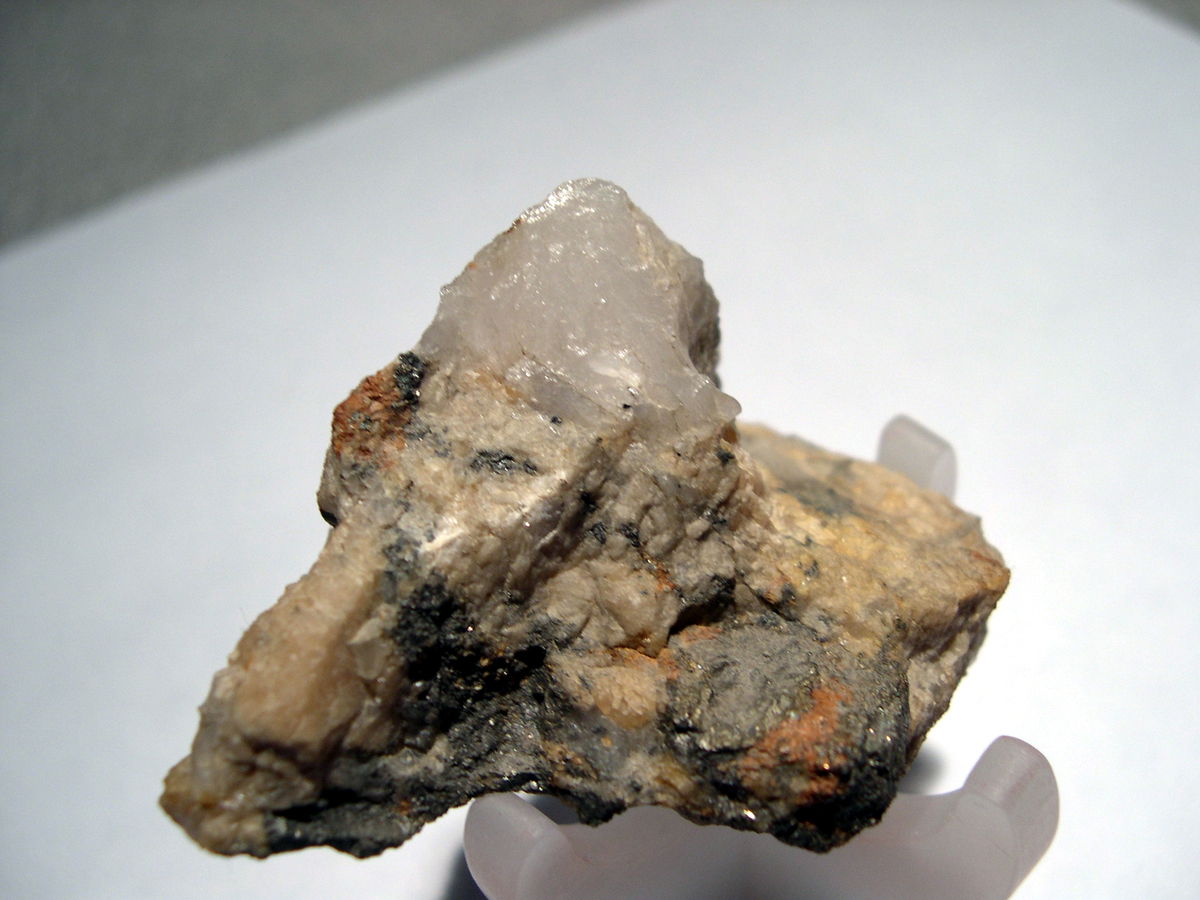


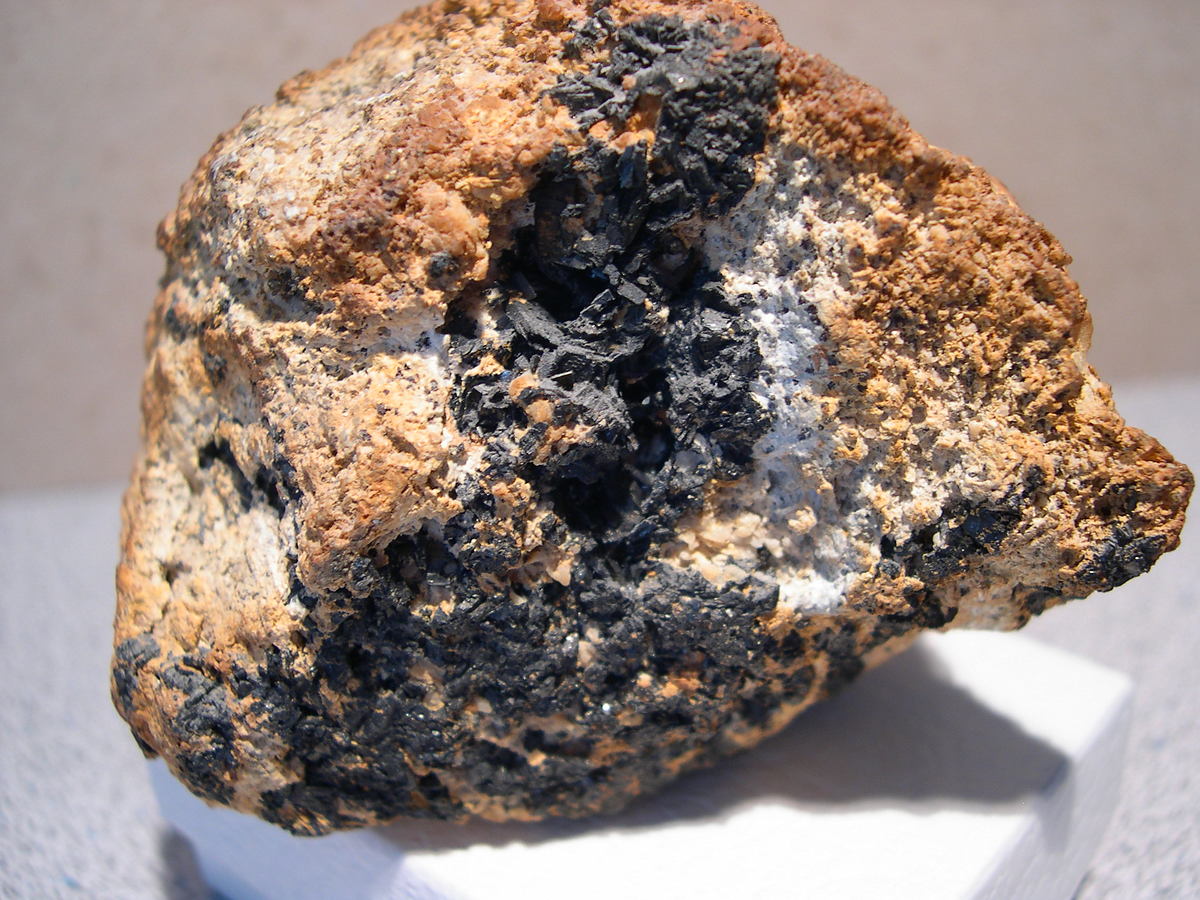




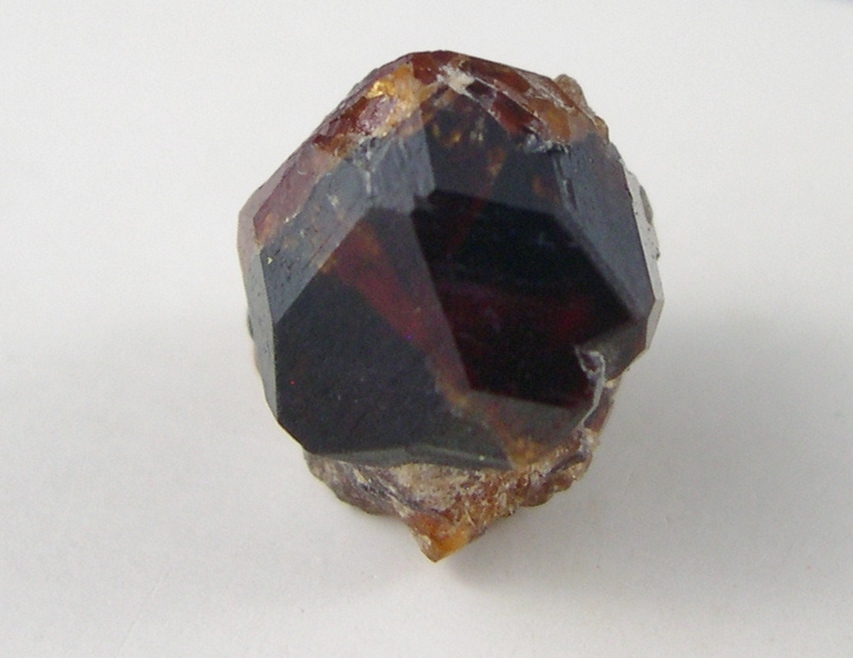

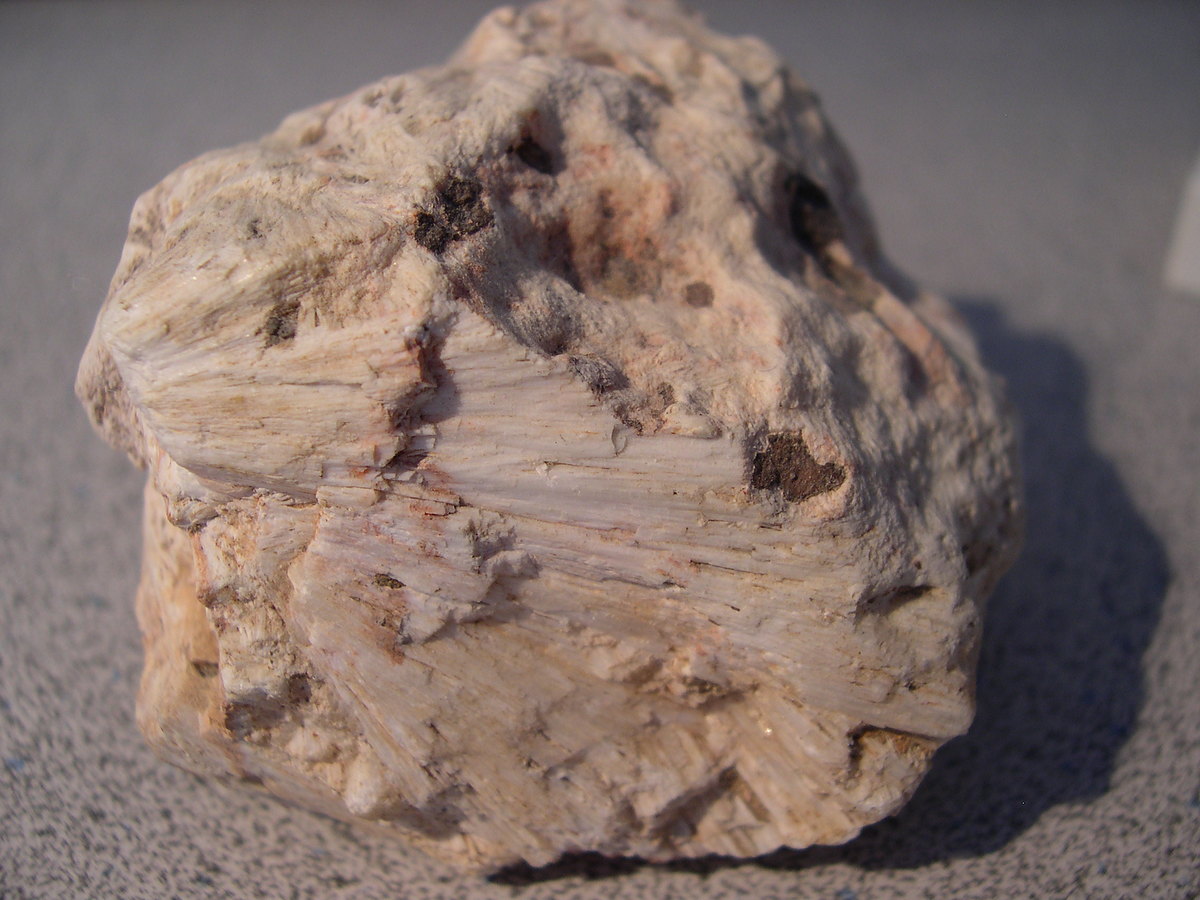
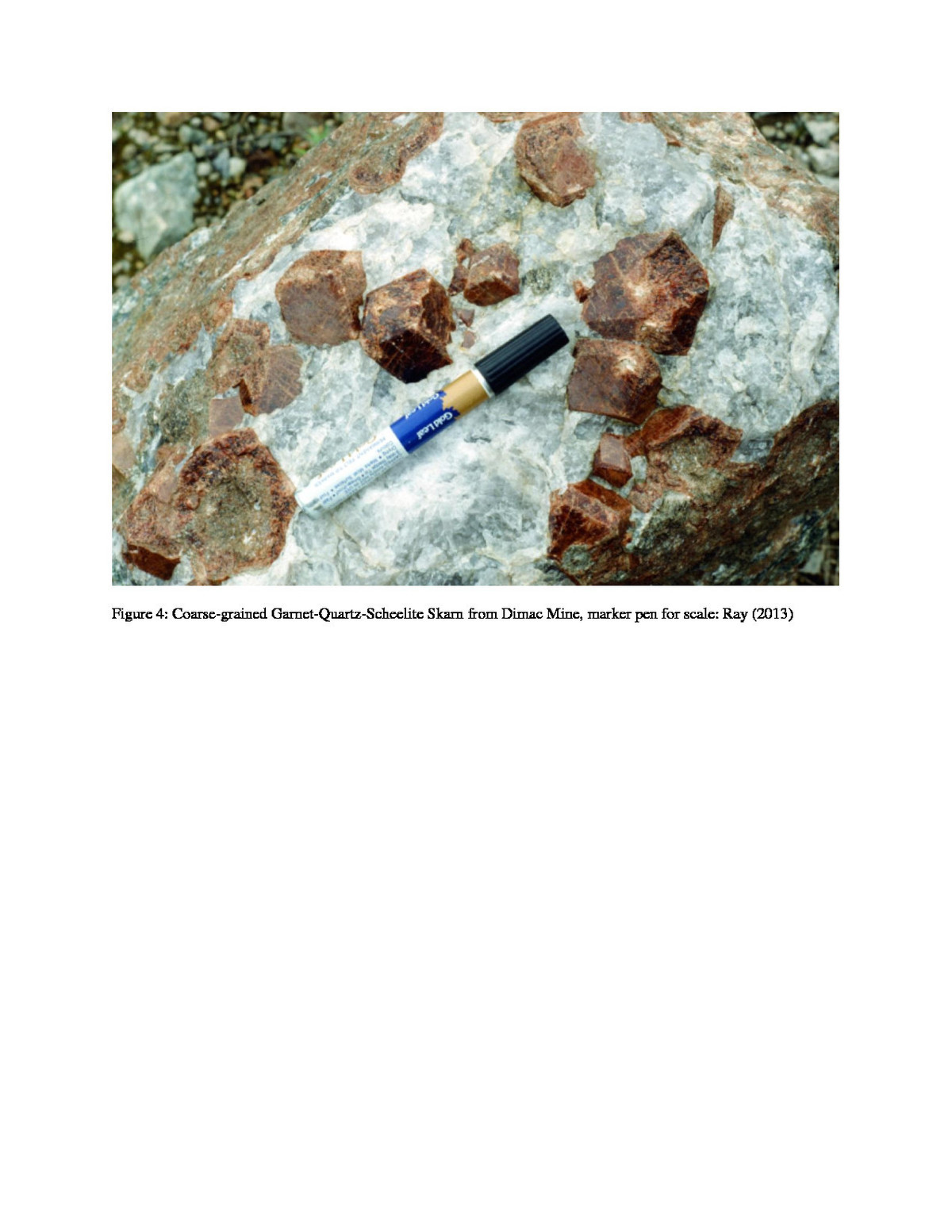


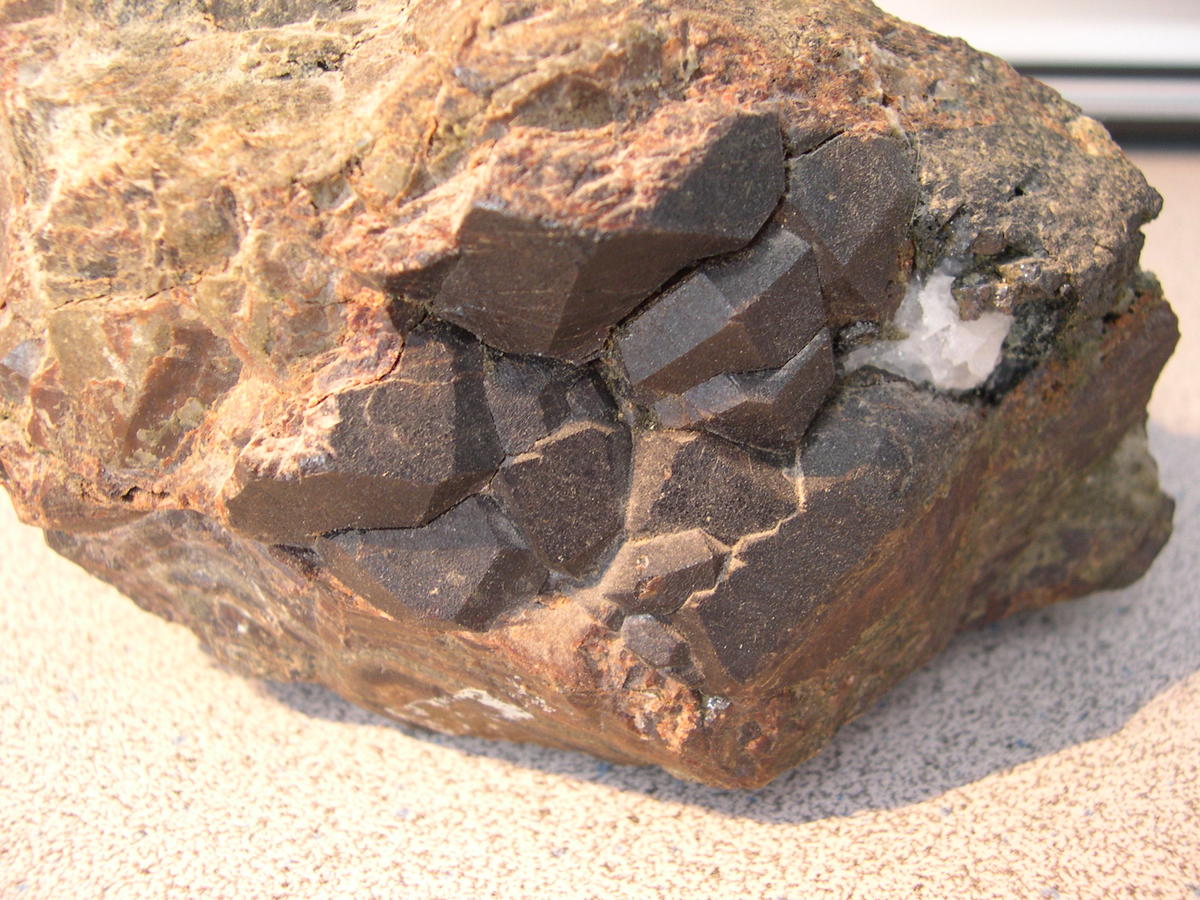


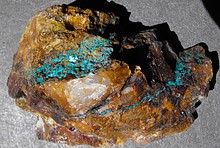













Dimac Mine, Silence Lake, Revelstoke Mining Division, British Columbia, Canada